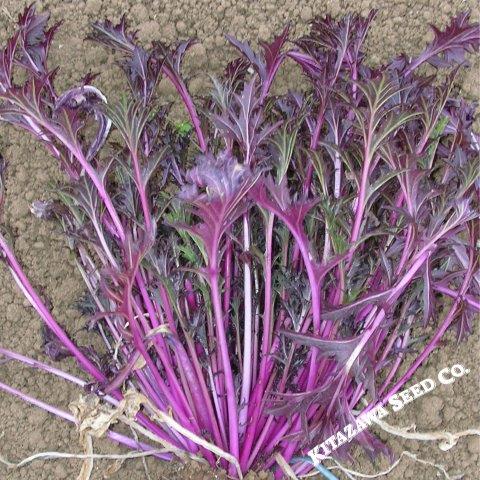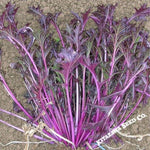
- A Japanese variety with jagged edged leaves with a mild sweet flavor that grows fast.
40-55 Days to maturity. Brassica Juncea. Central Red Mizuna Mustard Seeds. Non-GMO, annual hybrid. Central Red Mizuna is very often grown for use as a baby green. This is a delicious mild mustard green with pretty serrated leaves and bright purple stems. It’s perfect for salads or used in baby-leaf mixtures. The baby leaves will be ready about three weeks after they sprout! Sow every two weeks or so for a continuous harvest. For a heartier mustard flavor, grow to full maturity. Approx 11,500 seeds seeds / oz.











